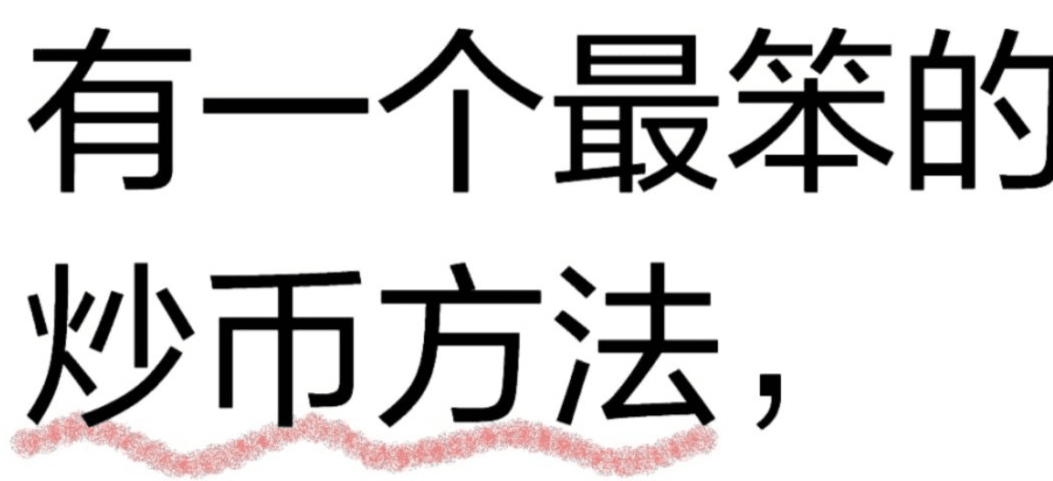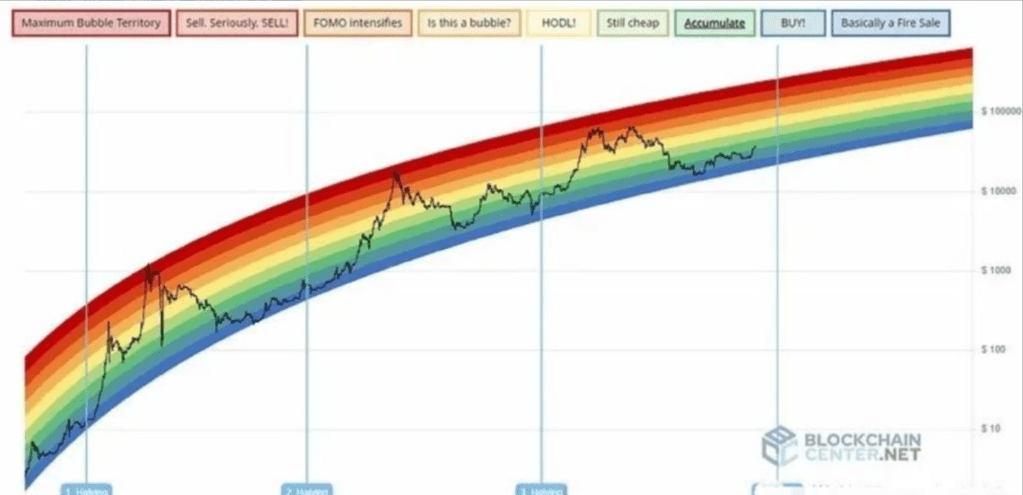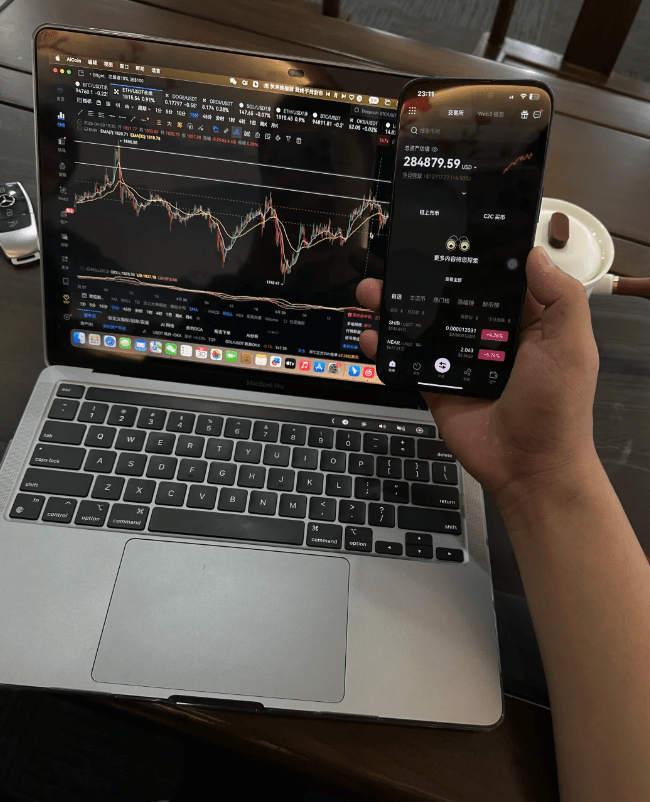There is only one way to earn 10 million from 10,000 through cryptocurrency speculation in one year: rolling over + investing in major altcoin projects!
Position management recommendations for everyone now:
1. For example, if you take out 30,000 U for contracts, my suggestion is to divide it into three parts, each part being 10,000 U.
2. For each position, use one part to open a position, fixed at 10,000 U; Bitcoin should not exceed 10 times, and altcoins should not exceed 5 times.
3. If you lose money, for example, losing 1,000 U, you can supplement 1,000 U from external sources; if you earn 1,000 U, you can withdraw 1,000 U.
4. Ensure that for the recent period, every time you open a position, you can guarantee a fixed position of 10,000 U.
5. Until you’ve earned from 30,000 U to 60,000 U using this method, increase your position to 20,000 U.
The benefits are: First, dividing positions + low leverage to avoid being wiped out by exchange spikes, causing you to lose all your funds.
The second point is to avoid issues like getting overexcited. If one day you get overexcited and lose everything, then at most you’ll lose 1/3, and you still have the remaining portion to give you a buffer opportunity.
The third point is to maintain a fixed position; whether you are in a loss or profit situation, you can keep a relatively calm mindset, which can help stabilize your mentality.
The martial arts manual has been given to everyone, whether you can become famous in the Jianghu depends on yourself.
In the cryptocurrency circle, to earn 12 million from 10,000, there is only one way: rolling over +
The riskiest approach should also be divided into three parts. That is, you should at least give yourself three chances.
For example, if the total account funds amount to 200,000, the maximum loss permitted is 20%, which is 40,000. Therefore, I suggest that your most aggressive loss plan is: first loss 10,000, second loss 10,000, third loss 20,000. I believe there is a certain rationality in this loss strategy. Because if you get it right once out of three times, you can profit or at least survive in the market. Not being kicked out by the market is itself a form of success and a chance to win.
2. Grasp the overall market trend. Trends are much harder to navigate than sideways markets because trends involve chasing up and selling down; you need to have the determination to hold positions, while buying high and selling low aligns with human nature. Trading that aligns more with human nature often earns less. The difficulty in trading is precisely why it can be profitable. In an upward trend, any violent pullback should be met with a buying opportunity. Remember what I said about probability? So, if you’re not in the market or have exited, patiently wait for a 10-20% drop and boldly buy.
3. Set profit and loss targets. Setting profit and loss targets can be said to be the key to whether one can make a profit. In several trades, we need to ensure that total profits exceed total losses. Achieving this isn’t difficult; just follow these points: ① Each stop loss ≤ 5% of total funds; ② Each profit > 5% of total funds; ③ Total trading win rate > 50%. Meeting the above requirements (a profit-loss ratio greater than 1 and a win rate greater than 50%) can lead to profitability. Of course, you can also have a high profit-loss ratio with a low win rate or a low profit-loss ratio with a high win rate. Anyway, as long as you ensure that total profits are positive, it’s good. Total profit = initial capital × (average profit × win rate - average loss × loss rate).
4. Remember that excessive frequent trading is risky. Because BTC perpetual contracts trade 24/7, many novices operate daily, almost trading every day in the 22 trading days of a month. As the saying goes: walking by the river often gets your shoes wet. The more you operate, the more likely you will make mistakes; once you make a mistake, your mindset will deteriorate. A bad mindset may lead to impulsive actions, choosing 'revenge' trading: going against the trend or over-leveraging. This can lead to a series of mistakes and easily result in huge losses that may take years to recover.
Key points to note when rolling over:
1. Sufficient patience, the profits from rolling over are enormous; as long as you can roll successfully a few times, you can earn at least over a million, so you cannot roll easily; look for high certainty opportunities.
2. High certainty opportunities refer to those that experience a crash followed by a sideways movement, and then break upward; at this time, the probability of following the trend is high, so you need to identify the trend reversal point and get on board right away.
3. Only roll long, do not short.

A guide to buying the dip and selling the top in the cryptocurrency circle, teaching you how to make big profits through these five major indicators.
Today, I will mainly introduce how to use indicators to judge tops and bottoms and how to optimize investment strategies.
How to earn money from cycles, how to amplify your cyclical returns.
2. Five major indicators teach you how to judge tops and bottoms.
1. Ahr 999 hoarding indicator.
Indicator introduction: This indicator was created by Weibo user Ahr 999, assisting Bitcoin regular investment users in making investment decisions combined with timing strategies. This indicator implies the short-term regular investment yield of Bitcoin and the deviation of the Bitcoin price from expected valuation. How to use:
When the ahr 999 index < 0.45, it is suitable for buying the dip:
When the ahr 999 index is between 0.45 and 1.2, it is suitable for regular investment;
When the ahr 999 index > 1.2, the coin price is relatively high and not suitable for regular investment.
Recommended reading by the indicator author (Hoard Bitcoin).
2. Rainbow chart.
Indicator introduction: The rainbow chart is a long-term valuation tool for Bitcoin. It uses a logarithmic growth curve to predict Bitcoin's potential future price direction.
It covers the rainbow band at the top of the logarithmic growth curve, attempting to highlight the market sentiment at each rainbow color stage as the price passes through it. Thus highlighting potential buying and selling opportunities.
So far, the price of Bitcoin continues to stay within the rainbow band of the logarithmic growth channel.

How to use:
The closer to blue, the closer the price is to the bottom.
The closer to red, the closer the price is to the top.
3. RSI.
Indicator introduction: RSI (Relative Strength Index) is an indicator that measures the speed and magnitude of Bitcoin price changes, calculated based on the performance of the previous 12 months to assess market strength, and whether it is in the overbought or oversold range.
The stronger the upward momentum, the closer the RSI will be to 100, and a high RSI also indicates that price movements over the past 12 months have been relatively positive; conversely, the stronger the downward momentum, the closer the RSI will be to 0, with a low RSI value indicating that price movements are relatively negative.

How to use:
An RSI value of 30 or below (the closer to red) indicates that Bitcoin is oversold or may soon face overselling, making it suitable to consider buying the dip.
An RSI value of 70 or above (the closer to green) indicates that Bitcoin is overbought and may soon face a decline, making it suitable to consider selling.
4. 200-week moving average heatmap
Indicator introduction: This indicator uses a color heatmap based on the percentage growth from the 200-week moving average.
Assign a color to the price chart based on the monthly percentage growth of the 200-week moving average.
Historically, in every major market cycle, the price of Bitcoin has bottomed near the 200-week moving average line.

How to use:
The closer the dot color on the price chart is to red, the more overheated the market is, making it suitable for selling;
The closer to purple, the colder the market is, making it suitable for buying.
It should be noted that this indicator failed at the top of the last bull market, which indicates that we cannot fully rely on indicators. Indicators are merely tools to assist us in judgment, and we need to consider many other factors.
5. CVDD
Indicator introduction: CVDD stands for Cumulative Value-days Destroyed.
How to use: When the Bitcoin price touches the green line, it indicates that the Bitcoin price is severely undervalued, making it a great buying opportunity.
Are you struggling alone? How can we get a tenfold opportunity? Quickly hit follow and keep up with Brother Yong's pace. Holding onto the first-level market insights, specifically digging for potential coins, it's better to stay close than to wait for the wind; don’t let the meat fall into someone else's bowl.

